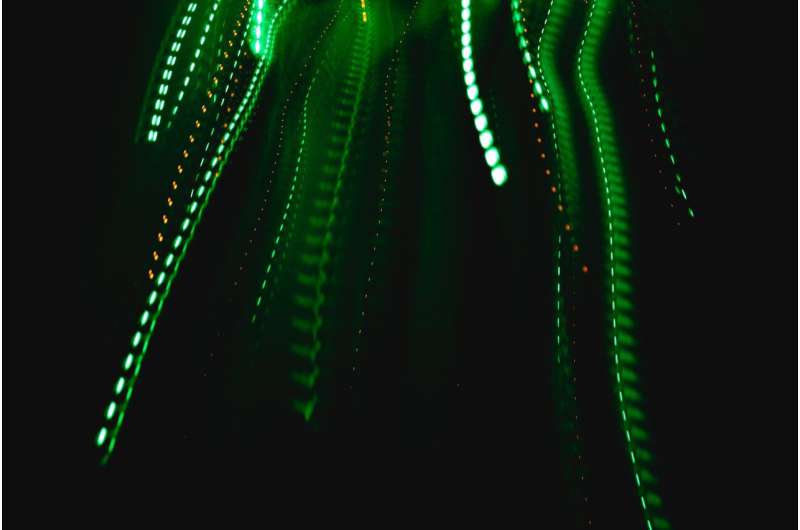Rsearchers suggest modification of quantum encryption system with compact detector

A new system can significantly lower the production costs costs of mass quantum key distribution (QKD) networks, which will make them available to a wider user audience. This will make it possible to use QDK in the regular fiber-optic cable infrastructure. The paper was published in Scientific Reports.
Many have heard about quantum key distribution (QKD), which is also sometimes referred to as quantum encryption. Today, this is one of the safest ways to encode information that can then be used by major banks, military and governmental organizations. In a QDK system, the information is transmitted by quantum radiation, which is extremely hard for eavesdroppers to intercept.
"As a rule, QKD uses a weak laser light with an average number of photons less than unity," explains Eduard Samsonov, a research associate at ITMO's Faculty of Photonics and Optical Information. "This light has fundamental special features, the so-called quantum effects that leave no chance for a third party to infiltrate the channel to read the information without being noticed."
The demand for QKD systems is constantly growing. There is, however, one hindrance to their mass production—it requires highly complex and expensive equipment. Moreover, these systems can hardly be used in the already existent fiber-optic infrastructure. Recently, ITMO University researchers have published an article where they suggest a way to solve these problems.
ITMO University researchers have developed a QKD system with coherent detection based on subcarrier wave quantum key distribution protocol.
The main outstanding feature of the system is the method used to form states with an electro-optical phase modulator. "That is, if the radiation occurs at a certain optical frequency, phase modulation results in subcarrier frequencies being formed, which contain certain information about the signal transmitted. If the modulation index is low, light radiation at these subcarrier frequencies will be weak," explains Eduard Samsonov.
The main breakthrough of the researchers is a unique method of coherent detection for exactly this kind of system. At the base of the method is the use of a carrier optical frequency that doesn't transmit any information by itself but can be used as a support to register the weak signal phase from subcarrier frequencies.
Effectively, the researchers suggest installing another modulator like the one creating the initial signal at subcarrier frequencies but with an increased modulation index, and then bringing the signal through it again. This way, additional subcarrier frequencies are created one more time and interact with those coming from the transmitter. "Thus, with constructive interference the greater part of radiation will be at the subcarrier frequencies—and vice versa, with destructive interference the greater part will be at the central frequency, which can be registered by a balance detector."
At the same time, the system maintains all the safety and security of QKD. The researchers have created a mathematical model of the suggested scheme, which correlates well with experimental data. They have also proposed an analysis of the developed protocol's resilience to collective attacks.
More information: E. Samsonov et al. Subcarrier wave continuous variable quantum key distribution with discrete modulation: mathematical model and finite-key analysis, Scientific Reports (2020). DOI: 10.1038/s41598-020-66948-0
Journal information: Scientific Reports
Provided by ITMO University





















